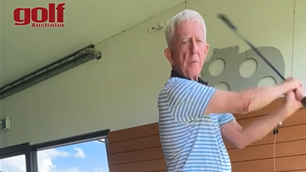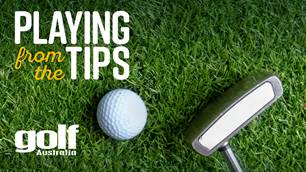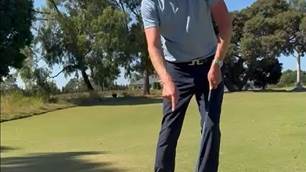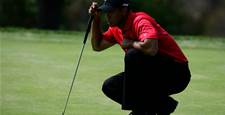Motion capture technology is helping Justin Rose change the spec of his clubs – and his shot shapes.
THE FADE
Set Up
As with the draw, the shot shape – the ball starts a little left of the target before feathering back to the right – is created simply through my address lines. The process for setting them up remains the same:
1. Aim the clubface first. The ball must start its journey left of the target, so that means aiming the face a little left of the target. Again, I’ve used tee pegs to show the face aim. It may feel odd to you to see the clubface closed to the target for a shot you need to cut – but persevere, and remember the fadespin is created by the face being open to the swing path at impact.
2. Once again, the alignment of feet, hips and shoulders dictates the swing path. The important thing now is to create a foot line that is further left than the clubface’s aim, because the face must be open to the path if the ball is to fade. The shaft on the ground, representing body aim, shows I have achieved that.
At The Top
I really don’t give much thought to my backswing when shaping the ball. As long as I don’t try to manipulate anything, the club will move back through the path and arc set by the body’s alignment. Again, it’s good for me to see the clubshaft at the top echoing the line of the one on the ground, illustrating my foot line. It shows me I am in good shape to swing through along that toe line, left of the target.
Through The Ball
I have a very neutral golf swing; my natural shot is very straight. Having said that, if I had to hit a fairway I would probably go for a fade because it’s easier for a right-handed person to swing hard left.
As with the draw, my feeling is of being passive through impact; there is no feeling of “holding the club off” or anything like that, because I need the face to aim left at impact to send the ball left.
My only thought is taking the hands out and rotating through the shot to let the club swing down the line of my feet.
Related Articles

Video Lesson: Hear the swoosh past the ball

Playing From The Tips Ep.106: Texas Open, LIV Miami & LPGA Match Play












